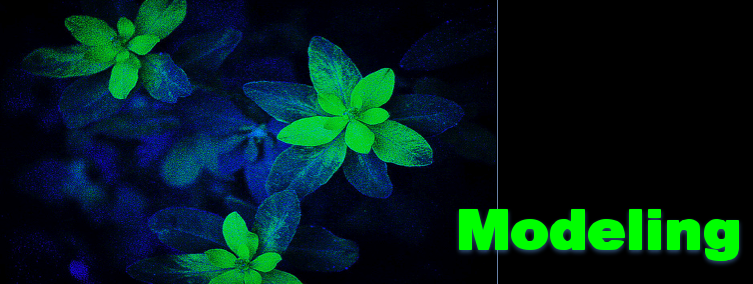Team:Nevada/Modeling
From 2010.igem.org
(→Data) |
(→Data) |
||
| Line 27: | Line 27: | ||
Because this data consisted of only four time points, all eight genes had similar Boolean values at each time point. Therefore, the Boolean functions for each were essentially the same and numbered in the billions. This provided little data for interpretation. Several methods were used to tease out differences in expression, so that the time courses would be sufficiently different. First, the threshold value for "on" was raised to 2^3.5 rather than 4. Second, The data was interpolated to estimate extra time points within the 24-hour time course. Finally, the number of inputs for each gene were limited to four, as it was deemed unlikely that any gene in this network was receiving input from 5 or more. | Because this data consisted of only four time points, all eight genes had similar Boolean values at each time point. Therefore, the Boolean functions for each were essentially the same and numbered in the billions. This provided little data for interpretation. Several methods were used to tease out differences in expression, so that the time courses would be sufficiently different. First, the threshold value for "on" was raised to 2^3.5 rather than 4. Second, The data was interpolated to estimate extra time points within the 24-hour time course. Finally, the number of inputs for each gene were limited to four, as it was deemed unlikely that any gene in this network was receiving input from 5 or more. | ||
| + | |||
| + | [https://2010.igem.org/Team:Nevada/Interpolated_Data<u>Click here to see the interpolated data set and associated Boolean functions</u>] | ||
=== Results === | === Results === | ||
Revision as of 08:41, 27 October 2010
Contents |
Modeling

Introduction
Plant stress responses are often cascades involving hundreds of genes and gene products. The possible interactions in these cascades are astronomical. Therefore, the 2010 Nevada iGEM team worked with Bioinformatics Professor, Karen Schlauch, to develop a computer model that could quickly analyze possible transcriptional regulation pathways using either microarray data or data from continuous fluorometry experiments. In conjunction with the use of tobacco BY-2 (NT1) cells, this model could allow for even greater time efficiency in identifying important aspects of gene networks. The model was intended to allow for easier identification of promoters useful to the team’s objective of creating remote plant biosensors. The model made use of a Boolean network in which transcripts were considered “on” when above a threshold value and “off” for lesser values. The on/off values at given time points were then run through a combinatorial circuit to predict the most probable pathways.
The DREB1 Pathway
Boolean Networks
Data
When it became clear that the team would not have sufficient time to produce fluorometry experiments and analyze data by November, it was decided that microarray experiments published to internet databases would have to do. All data was originally obtained from a 24-hour time course microarray experiment performed by Jian-Kang Zhu, et al, and published on the Gene Expression Omnibus database (Zhu, et al. 2005). This allowed for a proof-of-concept to see if the Boolean network would support what was known about the DREB1 pathway from published literature.
Click here to see the initial data set
Because this data consisted of only four time points, all eight genes had similar Boolean values at each time point. Therefore, the Boolean functions for each were essentially the same and numbered in the billions. This provided little data for interpretation. Several methods were used to tease out differences in expression, so that the time courses would be sufficiently different. First, the threshold value for "on" was raised to 2^3.5 rather than 4. Second, The data was interpolated to estimate extra time points within the 24-hour time course. Finally, the number of inputs for each gene were limited to four, as it was deemed unlikely that any gene in this network was receiving input from 5 or more.
Click here to see the interpolated data set and associated Boolean functions
Results
References
Zhu, J-K., Lee, B., Henderson, D. (2005) The Arabidopsis Cold-Responsive Transcriptome and Its Regulation by ICE1. Plant Cell. Vol. 17, Issue 11, p3155-3175.

| 
| 
| 
| 
|
|---|
 "
"

